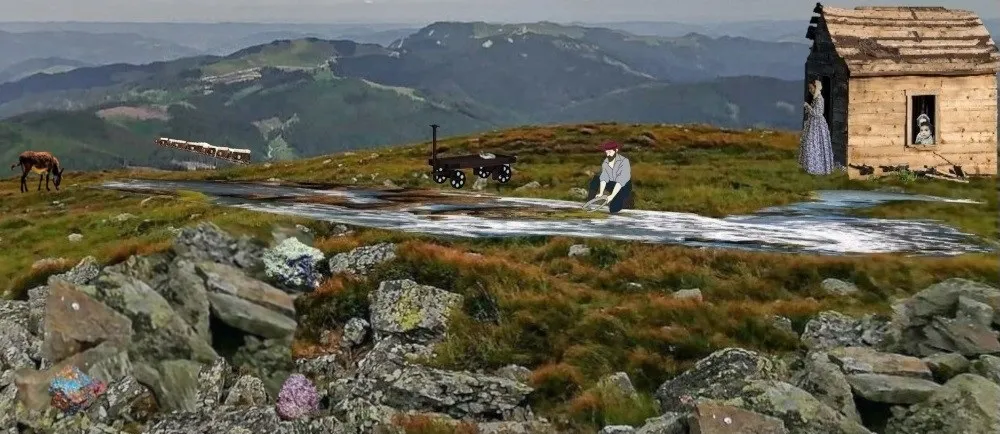
My collage for @shaka's 49th edition of Let's Make a Collage, #LMAC, has a frontier theme:

"There's Gold in Them Thar Hills!" The phrase, which epitomized an era, is attributed to Mark Twain. Gold lay in the ground, waiting to be seized. A kind of frenzy gripped people from all over the world. They rushed first to California, then to Australia and the Canadian Yukon. The lure of sudden wealth changed the frontiers in all three countries. The rapid migration disrupted irreparably the lives of Indigenous peoples who had lived in the affected areas for thousands of years.

Looking for Gold in Klondike, Canada
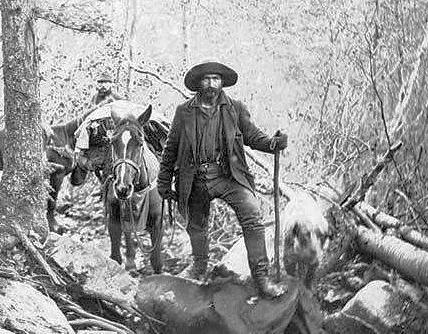
Picture credit: Asahel Curtis,1898. Public domain. The caption under this picture reads: "Klondiker with packhorse and dog on Porcupine Hill, White Pass Trail, ca. 1898."
In 1896, the Yukon Gold Rush drew more than 100,000 hopeful prospectors to the frozen wilderness. According to History.com, only half of the travelers made it to their destination. Few of these actually struck it rich.

An Australian Gold Diggings: 1855
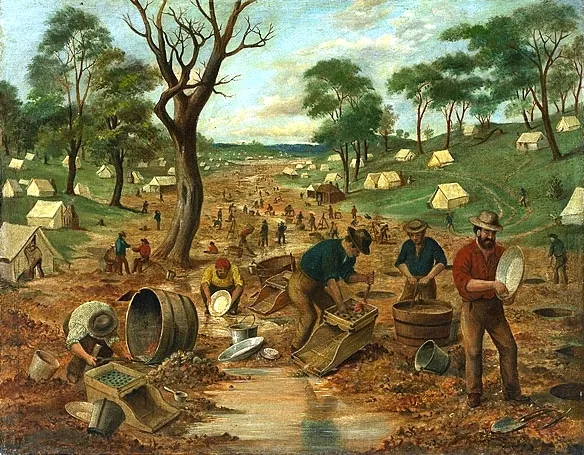
Picture credit: Edwin Stockqueler (1829-1900). Public domain.
In 1851, an Australian, Edward Hargraves, returned from the United States. He had tried his hand at prospecting in the American West and had failed. However, upon his return to Australia he claimed that he found gold in Bathurst, New South Wales. Soon, other gold fields were discovered and people from all over the world rushed to Australia in search of wealth.

Prospector in California, 1850
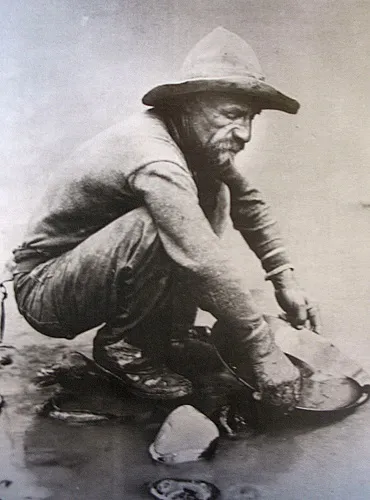
Photo credit: L.C. McClure. Public domain.
John Marshall discovered a gold nugget in a California river. It was 1848,and the spur to one of the greatest westward migrations in U. S. history. An estimated 300,000 people flooded the hills of the Sierra Nevada in the span of a few years.

Rush for Gold Changes the Landscape, and History
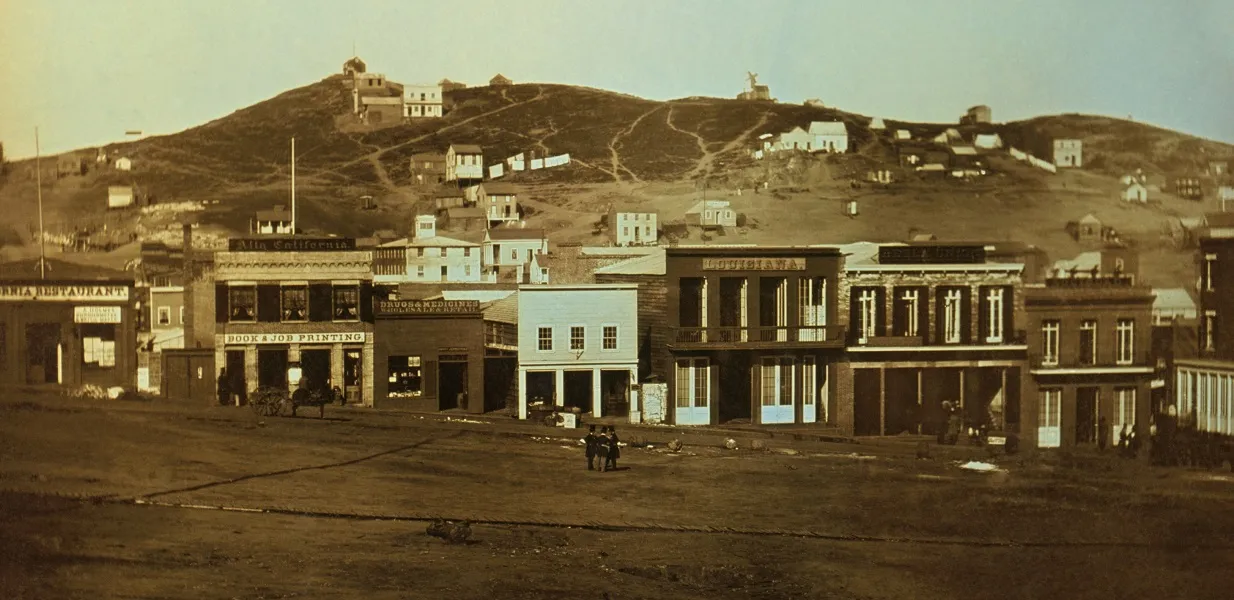
Portsmouth Square in San Francisco, USA, 1851. Unknown author. Public domain.
In a period of twenty-four months (beginning of 1848 to the end of 1949), the population of San Francisco grew from 1,000 to 25,000.

Families, prospectors, merchants, adventurers flocked to the American West. They imagined the land was theirs for the taking. It did not occur to them that the land might already be occupied. The settlers' naive perspective was abetted by the U. S. government, which offered free homesteads to anyone who would settle on a tract of western land.
A Homesteader in Milton, North Dakota 1898
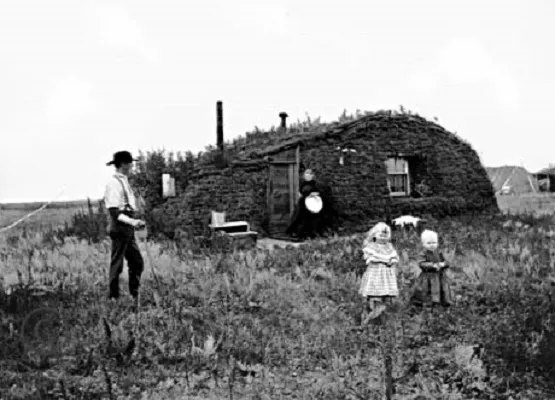
Photo credit: Unknown. Public domain.

The western land was, of course, occupied. So, as covered wagons crossed mountains and plains, indigenous peoples resisted. They tried to hold onto their land. The prolonged struggle that ensued has been called the Indian Wars.
Protecting the Settlers
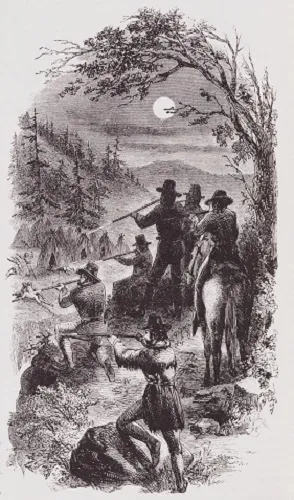
Illustration credit: John Ross Browne (1821-1875). Public domain. If you look closely at the picture, you can see teepees in the distance. The U. S. Calvary, and civilians, are 'protecting' settlers.
The story of conflict between indigenous peoples and settlers was repeated in Australia and Canada. In each case, a rush for gold exacerbated tensions as the migration into indigenous territories accelerated settlement.

Fighting Between an Expeditionary Party and Indigenous Australians
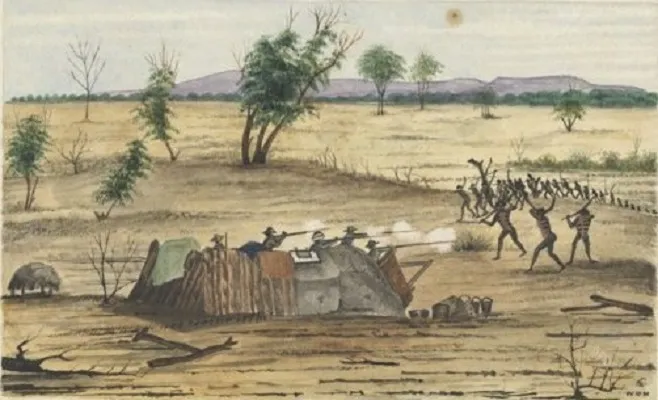
Picture by William Hodgkinson, 1861. Public domain.. The painting depicts a battle in Bulla, Queensland, Australia. This was one of many confrontations that took place in Australia's Frontier Wars.

Battle of Fish Creek, 1885 North-West Resistance, Canada
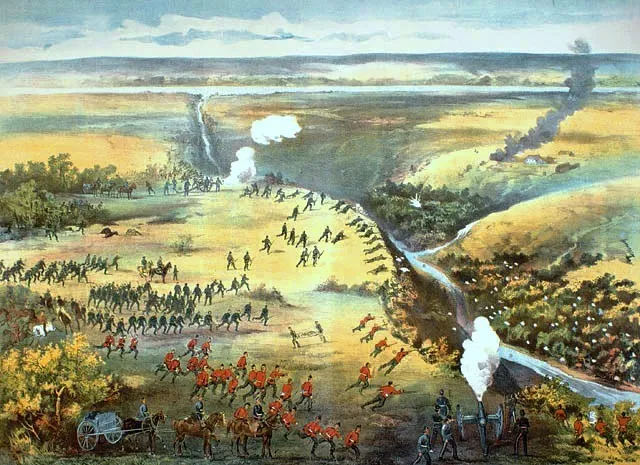
Painting: Fred W. Curzon (1862-1890). Public domain.
In Canada, there were armed confrontations between Indigenous peoples and settlers/government. The battle pictured here was part of a conflict known as the Northwest-Resistance.

Big Bear/Mistahimaskwa 1885
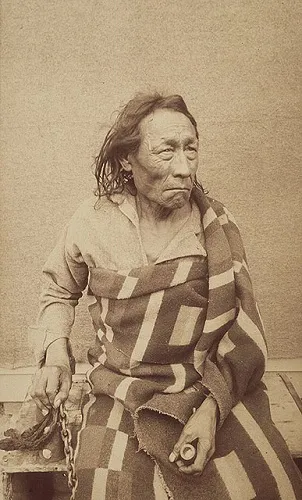
Picture Credit: O.B. Buell. Public domain. Big Bear was a Cree chief who tried to form an alliance with other tribes. The Canadian government's refusal to allow this helped to precipitate the North-West Resistance.
With the victory of the Canadian government, according to Canadian Encyclopedia, came "...the subjugation of Plains Indigenous Peoples in Canada."

My Collage
From my first look at @photoark's evocative picture, I thought of mining:
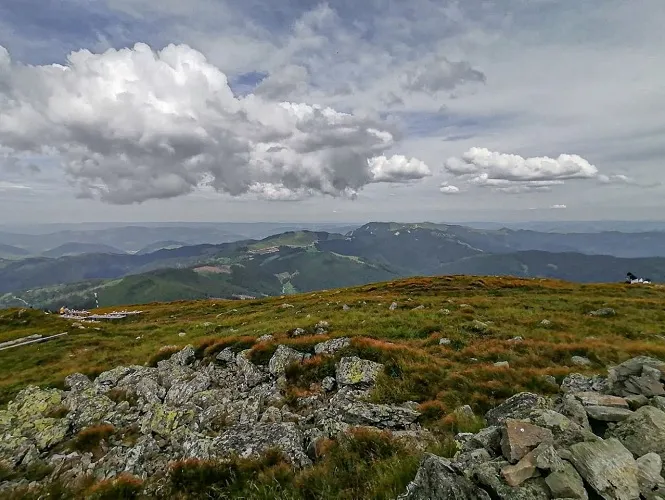
The rocks did it. A frontier motif evolved pretty quickly. Finding pictures of someone panning for gold was hard. I wanted to erase all signs of modernity. There needed to be a stream, where the prospector panned for gold. I had in my head the idea of a crude frontier cabin: one room, loft bedding, central hearth with a stove for heating and cooking. There's probably a gun inside, for hunting and protection. In the distance, a wagon train progresses slowly as more settlers and prospectors head west.

These are sources for elements in the collage. All are from Pixabay, except the cabin (which came from Unsplash). All are in the public domain, free of copyright:
Mule, Prospector, Woman, Child #1 (in the window), Child #2 (in the window), Wagon, Cabin, Wagon Train (in the distant hills), Mineral Rock #1, Stream,Mineral Rock #2, Mineral Rock #3.
Gif credits: All Pixabay: Winchester rifle, Nugget, Covered wagon

I hope you enjoyed my journey into the past. I recommend you head over to @redheadpei's blog and check out her collage, which speaks eloquently of the plight of the buffalo and First Peoples (in Canada).
Thank you, @shaka, and thank you #lmac community, for another stimulating creative exercise. Many brilliant collages available on @shaka's blog. Go over there and take a look. You'll be glad you did!


Hive on!